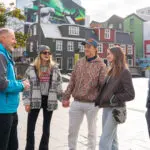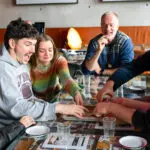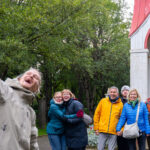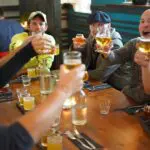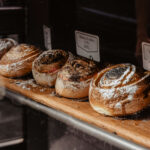Just off the coast of South Iceland, near the stunning Seljalandsfoss, lie the Vestmannaeyjar (The Westman Islands). Inhabited since shortly after Ingólfur Arnarson’s arrival in Iceland, these islands offer a captivating blend of history and natural beauty. Whether you have just a day or more to spare, we highly encourage you to visit Vestmannaeyjar. A wealth of experiences awaits you, from exploring museums to encountering wildlife in animal sanctuaries, not to mention thrilling boat tours. Don’t miss the chance to experience all that Vestmannaeyjar has to offer.
What to do in Vestmannaeyjar?
Eldheimar Museum
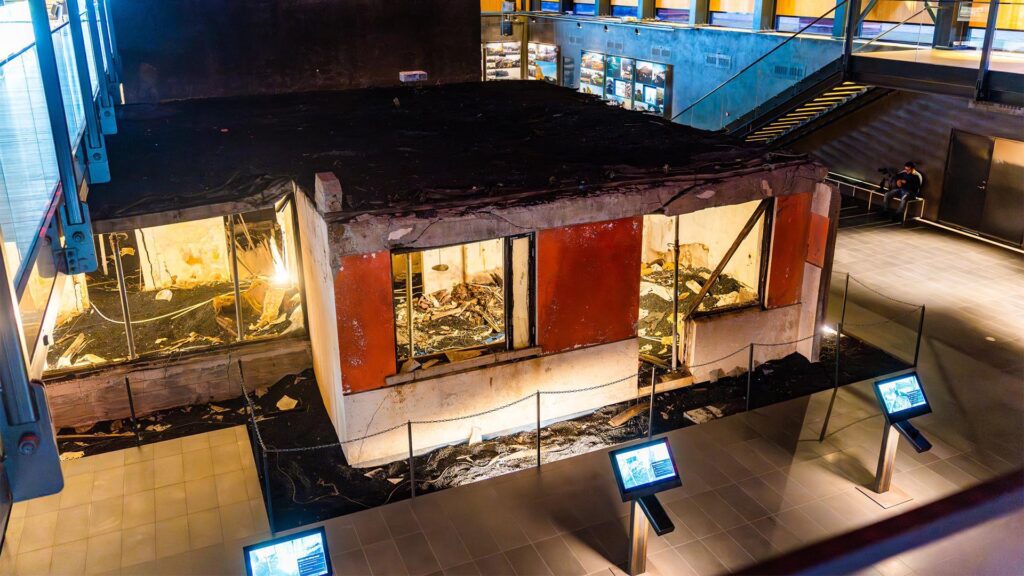
The Eldheimar Museum is dedicated to the 1973 Vestmannaeyjar volcanic eruption, providing insights into the lives of Heimaey Island residents before their environment was forever changed. The eruption started on January 23, 1973, leading to the evacuation of the island’s population, with many losing their homes and possessions.
Over five months, this event significantly impacted Heimaey, destroying nearly 400 homes and businesses as lava and ash altered the island’s landscape. Before the eruption, about 5,300 people lived on Heimaey, all of whom had to leave their homes behind due to the eruption.
The eruption gained international attention and attracted visitors from around the world interested in observing the power of natural forces. It also added 2.5 km² to the island’s size and created the Eldfell volcano, permanently changing Heimaey’s geography.
Years later, the Eldheimar Museum was established to document and remember the eruption. A significant exhibit is Gerðisbraut 10, a house dug out from under the ash and lava, illustrating the direct effects of the eruption on individual homes. The museum also covers the Surtsey eruption, another important volcanic event that led to the creation of a new island. Surtsey has been valuable for scientific research and was named a UNESCO World Heritage Site in 2008, highlighting its importance for understanding natural processes.
Day Tours in Vestmannaeyjar
There are a few day tours you can choose from when you visit Vestmannaeyjar. Firstly, you could choose to do The Volcanic Westman Island Tour which takes you directly from Vestmannaeyjar and back. Include in the price is guided tour, ferry right, entrance to Eldheimar Museum, lunch at Gott Restaurant and puffin watching. This tour, however, is only available in the summer.
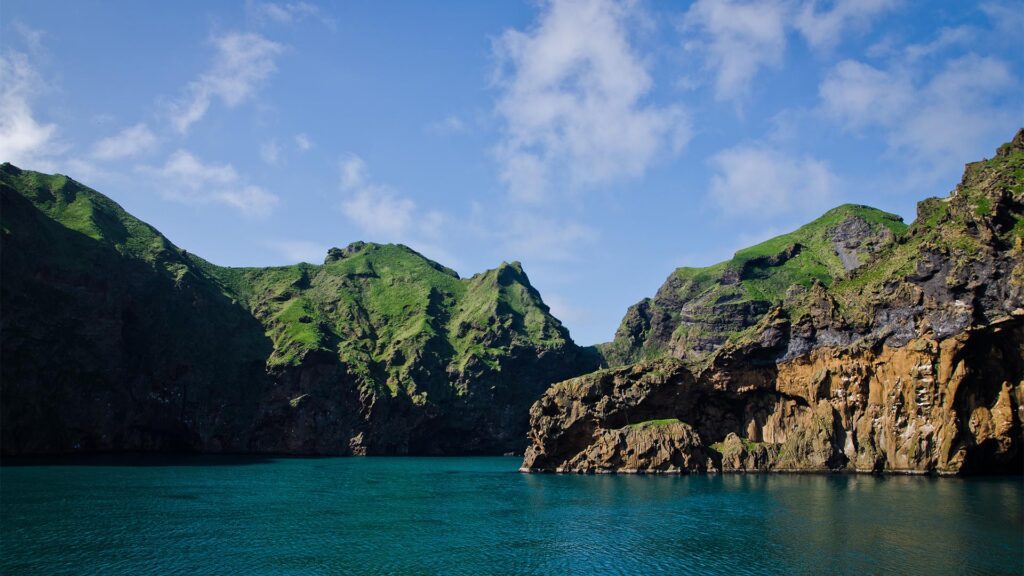
For solo travellers, exploring local tour options like Odin Travel is a great choice. They offer the Nature and History Tour, a 2-hour luxury bus journey guided by someone who witnessed the 1973 volcanic eruption firsthand. This tour allows you to soak in the island’s magnificent landscapes, unique natural features, diverse birdlife, and dramatic sea cliffs. A highlight in the summer months is a visit to the puffin area in Stórhöfði.
The excursion concludes at the Eldheimar Museum, one of Iceland’s most renowned museums, which delves into the volcanic eruption’s impact. Please be aware that museum entry fees are not covered in the tour’s cost.
Additionally, you can check out Rib Safari Boat Tours, for example, the two-hour tour where you will see “everything”. You will travel around the Vestmannaeyjar archipelago, starting with the smaller islands near Heimaey before exploring further afield. In favourable conditions, the tour may include Súlnasker, known as the archipelago’s crown jewel, and sightings of the famous elephant rock, diverse wildlife, stunning natural landscapes, and intriguing sea caves.
The tour offers the chance to see an array of seabirds, including gannets, puffins, fulmars, and kitty-wakes, with potential sightings of seals and whales. Stops along the way provide insights into the islands’ history, traditions, folklore, and natural environment.
Þjóðhátíð – Iceland’s Biggest Outdoor Festival
Þjóðhátíð, or the National Festival, is an annual highlight in Vestmannaeyjar, taking place in Herjólfsdalur Valley on Heimaey Island. Scheduled for the weekend before the first Monday of August, it draws thousands over four days for concerts, bonfires, fireworks, and the eagerly awaited Sunday night sing-along, attracting the event’s biggest audience. Organized by the local sports association ÍBV (Íþróttabandalag Vestmannaeyja), the festival’s attendance peaked at 16,000 to 17,000 in 2010.
Many attendees choose to camp in the valley, although local accommodations and homestays are also popular. The island is easily accessible via the Herjólfur ferry, flights from Vestmannaeyjar Airport, and additional boat services.
The festival began in 1874 when bad weather prevented the islanders from joining the mainland’s millennium celebrations of Iceland’s settlement. It has become the country’s largest multi-day festival and a significant cultural event.
The festival experienced a pause in 2020 and 2021 due to the COVID-19 pandemic, marking a notable break in its history aside from a suspension during World War I. It was held again in 2022, with about 15,000 people attending on Sunday.
A special feature of the festival is the brekkusöngur or “hill song,” a communal sing-along held on a natural amphitheatre hill, symbolizing the festival’s spirit of community and celebration.
The Beluga Whale Sanctuary
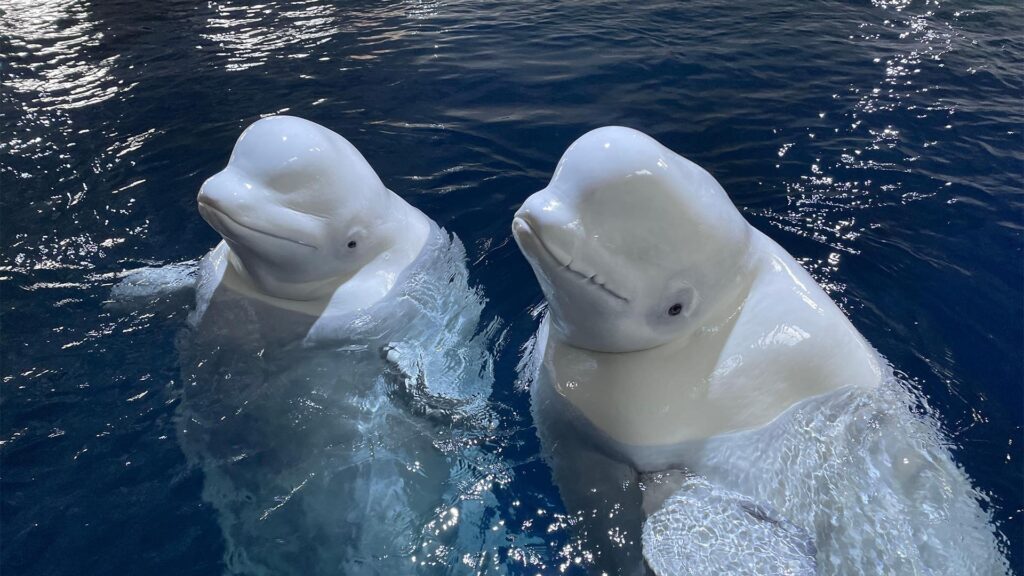
When you visit Vestmannaeyjar, you cannot skip checking out the SEA LIFE TRUST Beluga Whale Sanctuary. It offers beluga whales a safer, natural habitat and aims to improve the lives of marine animals. The sanctuary encourages shifting from traditional captivity to more humane, spacious sanctuaries. This approach could benefit over 3,000 captive whales and dolphins globally.
The sanctuary’s first beluga residents, Little White and Little Grey, travelled 6,000 miles from Shanghai to their new, expansive home in Iceland. Besides caring for belugas, the sanctuary includes a Puffin Rescue Centre for rehabilitating and releasing puffins and an aquarium in the Visitor Centre that educates the public about local marine life. The Visitor Centre’s proceeds go towards the animals’ care, supporting the sanctuary’s mission.
Adopt Little Grey and Little White
You can adopt the two beluga whales, Little Grey and Little White, who now call the SEA LIFE TRUST Beluga Whale Sanctuary their home. Both were born around 2007 in Russia; these female belugas have unique personalities and preferences.
Little Grey is an adventurous and vocal individual. Weighing approximately 1,100 kilograms and stretching 3.95 meters long, she thrives on a diet of herring and capelin, consuming up to 25 kilograms of fish daily. Little Grey’s curiosity drives her to be the first to check out new sanctuary areas, often displaying her playful side. She communicates with various sounds to grab attention or express her feelings, is always keen on exploring new things and frequently finds herself as the centre of attention.
Little White, similarly aged and originating from Russia, weighs about 1,200 kilograms and measures 3.97 meters long. Her diet matches Little Grey’s, with a daily intake of up to 25 kilograms of herring and capelin. Little White is more cautious, gradually warming to new environments and people. She often looks to Little Grey for cues, showing a strong bond with her companion and selected care team members. Little White’s approach to exploration is patient, taking her time to get acquainted with her surroundings.
Free Willy
This is not the first time that Vestmannaeyjar has made its surrounding ocean the home of a rescued whale. Keiko, a male orca captured near Iceland in 1979, became famous for playing Willy in the 1993 film “Free Willy.” Efforts by Warner Bros. and the International Marine Mammal Project in 1996 aimed to return him to the wild. After years of preparation, Keiko was moved to Iceland in 1998 and released into the ocean in 2002, marking the first time a captive orca was fully reintegrated into the wild. Unfortunately, Keiko died of pneumonia in Norway in 2003 at 27.
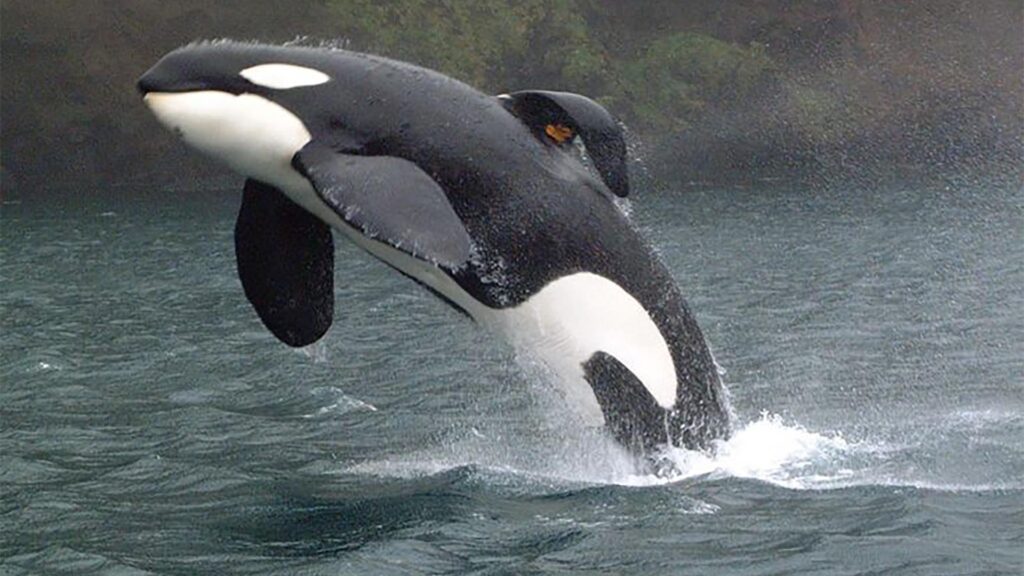
Captured as a young orca, Keiko’s early years involved performances and inadequate living conditions, leading to health issues. His role in “Free Willy” sparked a massive effort, funded by donations and led by the Free Willy-Keiko Foundation, to improve his health and work towards his release. Despite a controversial reintegration process and debates on its success, Keiko’s journey from captivity to brief freedom in the wild was monitored closely, involving extensive care and attempts to integrate him with wild orcas.
Keiko’s story highlights the complex challenges of returning captive marine animals to the wild. Critics argue that the funds spent on Keiko’s release could have supported broader conservation efforts. At the same time, supporters view his years of improved living conditions as a success. The debate continues over the best approach to care for long-term captive orcas, with some advocating for ocean sanctuaries as a humane alternative. Keiko’s legacy emphasizes the need for responsible captivity and the significant resources required for potential reintroduction to the wild.
Puffin Rescue Centre
The Beluga Whale Sanctuary in Iceland also houses the country’s only Puffin Rescue Centre, collaborating closely with the local Puffling Patrol and community members to care for puffins and pufflings (baby puffins) in need. This initiative, supported by admission fees and donations to the visitor centre, aids in treating, rehabilitating, and potentially releasing these birds.
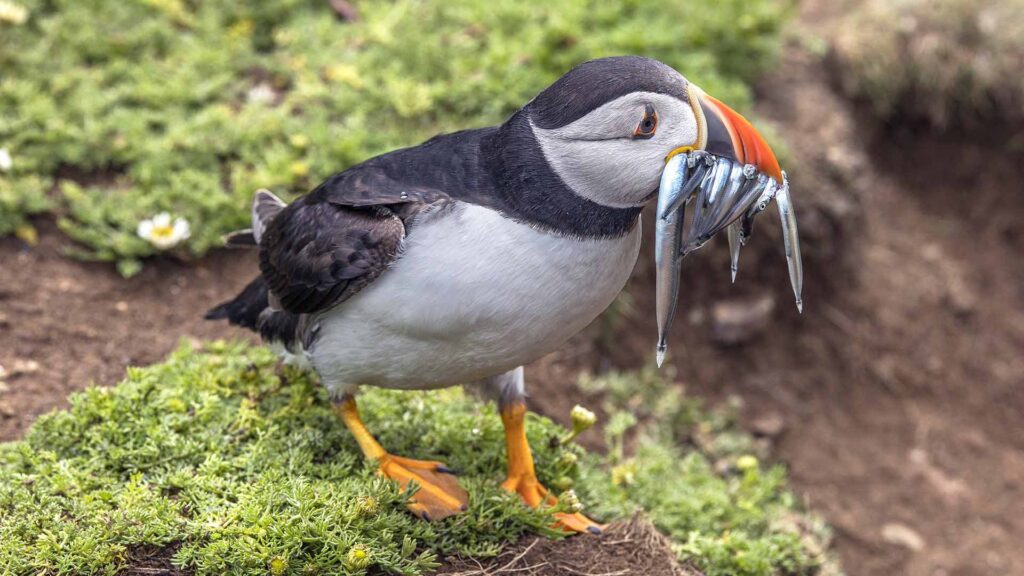
Since opening its Visitor Centre, the Sanctuary has played a vital role in the annual Puffling Patrol, starting in 2019. This effort focuses on rescuing, rehabilitating, and releasing pufflings injured or affected by oil spills in partnership with local organizations and volunteers.
Vestmannaeyjar, hosting Iceland’s largest Atlantic Puffin breeding colony, sees over 700,000 pairs of puffins each summer. As pufflings venture from their nests to the sea at summer’s end, many get disoriented or injured. The Sanctuary and its partners actively recover these birds from the town or harbour, evaluate their health, and swiftly return them to their natural habitat. The care provided ranges from nourishment for the underweight to extensive medical treatment for those harmed by oil, ensuring the preservation of this significant puffin population. Read more about the puffin in Iceland.
Food and Drink in Vestmannaeyjar
Whether you’re an aficionado of food or drink, you will not be disappointed when you visit Vestmannaeyjar.
Brothers Brewery
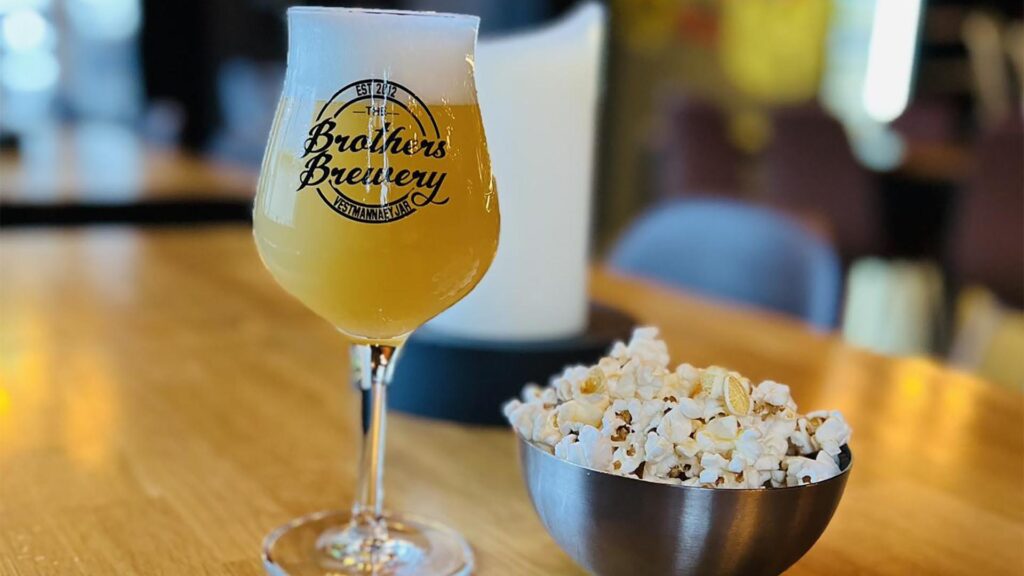
The Brothers Brewery, founded in 2012 by two friends and their brothers, quickly evolved from home brewing in a kitchen to operating out of a garage. By 2014, their craft caught the attention of Einar Björn, the owner of Einsi Kaldi—one of the town’s largest restaurants—who began offering their beer on tap. This partnership marked the start of their expansion. Today, the brewery occupies a 550m2 facility with a tavern where visitors can enjoy their beers. Additionally, renting the top floor for private tastings and introductions to their brewing process is an option. They also hold a beer festival at the end of June, which is well worth a visit.
Address:
Bárustígur 7
900 Vestmannaeyjar
Winter Opening Hours:
1 Sept – 1 May
Thursday 16:00 – 00:00
Friday 16:00 – 01:00
Saturday 14:00 – 01:00
Summer Opening Hours:
1 May – 1 Sept
Sunday – Wednesday 14:00-22:00
Thursday 14:00 – 00:00
Friday and Saturday 14:00 – 01:00
Gott
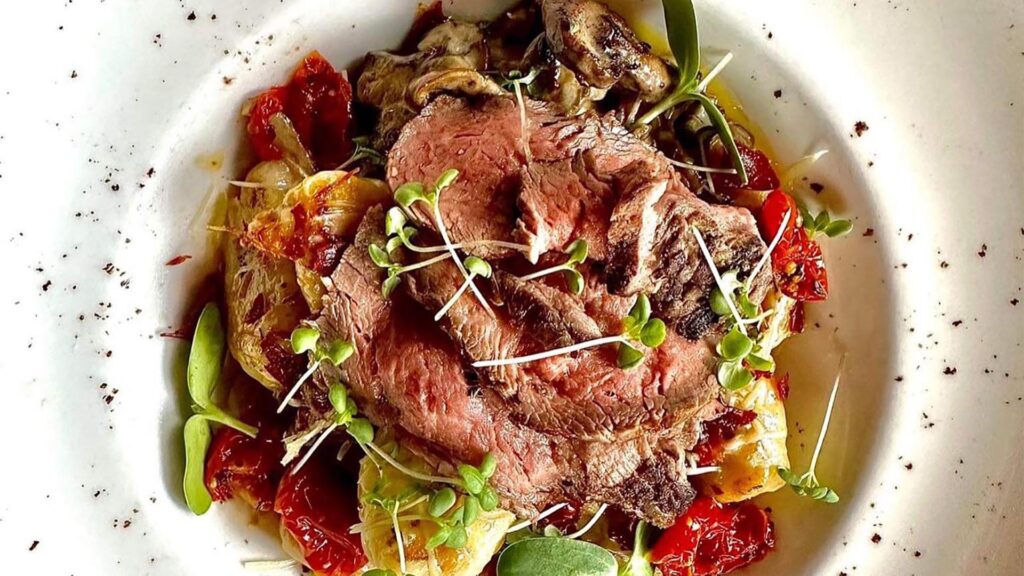
Gott is a vibrant family restaurant renowned for its commitment to health and creativity. Emphasizing fresh, wholesome ingredients, everything from sauces and stews to soups and cakes is made from scratch right in their kitchen. They pride themselves on sourcing fresh fish directly from the local fish market, ensuring quality and freshness in every dish. Leading the culinary team is a head chef with an impressive background as a member of the former Icelandic national team of chefs.
Address:
Bárustíg 11
900 Vestmannaeyjar
Slippurinn
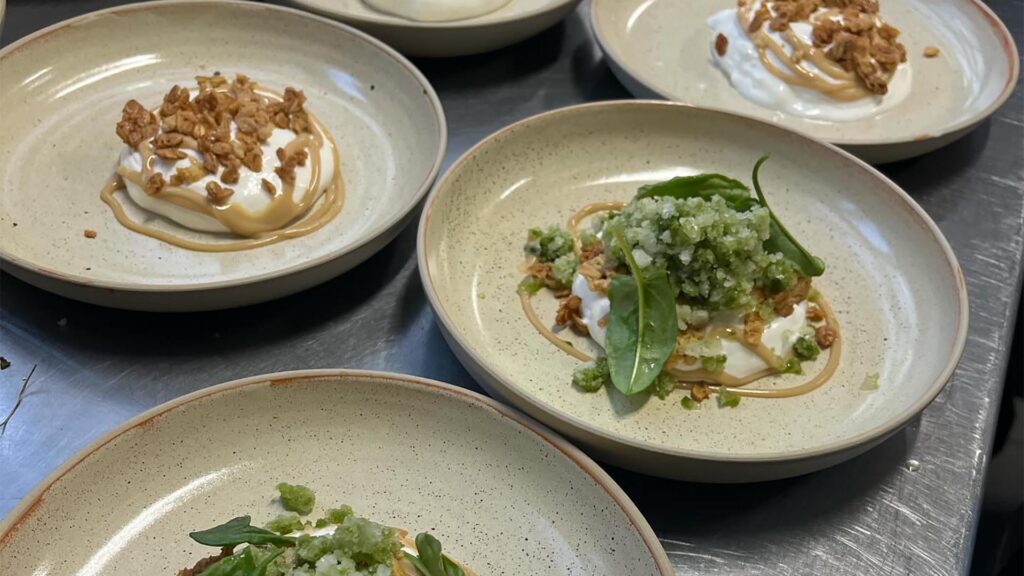
Established in 2012, Slippurinn is a seasonal restaurant set in the Magna House, the Westman Islands’ oldest concrete building, with a rich history tied to the area’s maritime heritage. The space, previously home to the Magni workshop serving the old shipyard (slippur), was transformed into a dining venue that respects its industrial legacy with a simple yet inviting design.
The restaurant celebrates the spirit of Heimaey, working closely with small local producers, fishermen, and farmers, and emphasizes foraging wild herbs and seaweed, as well as cultivating unique produce. The menu is a testament to the island’s natural abundance, offering local and seasonal dishes that change weekly, blending traditional Icelandic cuisine with innovative culinary techniques.
Slippurinn aims to be a source of pride for the local community, offering guests a dining experience that is both authentic and memorable, highlighting the passion and dedication behind its creation. As a seasonal restaurant, it is open from the end of May to the beginning of September.
However, if you can’t wait for summer, Slippurinn’s sister restaurant Næs is open all year round and is operated by the same people!
Address:
Strandvegur 76
900 Vestmannaeyjar
Næs Resturant Address:
Strandvegur 79
900 Vestmannaeyjar
Opening Hours:
Monday-Thursday 17:00 – 20:00
Friday-Saturday 17:00 – 20:30
Sunday CLOSED
Einsi Kaldi
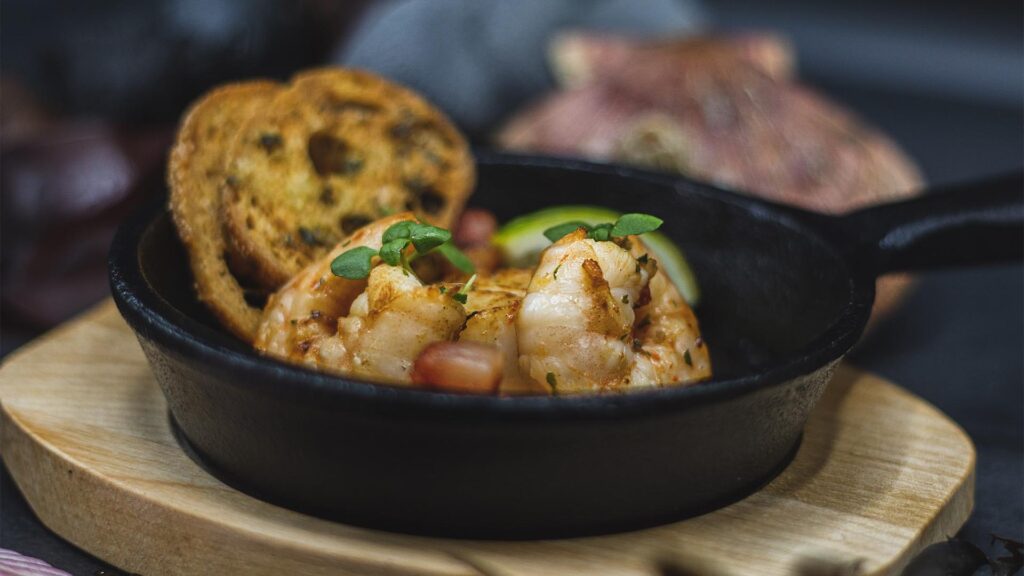
Einsi Kaldi restaurant is on the ground floor of Hotel Vestmannaeyjar and is housed in a significant historical building. Since its opening in 2011, the restaurant, under the culinary direction of Chef Einar Björn Árnason (Einsi Kaldi), has earned acclaim for exceptional cooking and outstanding service.
Guests can expect to experience first-class food and excellent service in a comfortable and welcoming atmosphere.
Address:
Vestmannabraut 29,
900 Vestmannaeyjar
Opening Hours:
Every day 17:00 – 21:30
How to Visit Vestmannaeyjar
To visit Vestmannaeyjar, there are several convenient options:
Herjólfur Ferry
The ferry service is provided by Herjólfur, a name belonging to four car ferries that connect the Vestmanna Islands with Landeyjahöfn and Þorlákshöfn. The most recent, Herjólfur IV, was introduced on July 25, 2019, as the series’s first environmentally friendly electric ferry. It can accommodate 65-70 cars and 540 passengers. This service honours Herjólfur Bárðarson, acknowledged as the islands’ pioneering settler.
Bus Number 52
Bus number 52 runs to Landeyjar Harbour, the departure point for the Herjólfur ferry, for those without a vehicle. Timetables and further details can be found on the Strætó website.
The Eruption that Changed Vestmannaeyjar
On January 23, 1973, an eruption began in Vestmannaeyjar, fundamentally altering the landscape and life on Heimaey Island. Initially, a vast fissure opened along the town’s eastern edge, stretching from the harbour in the north to Skarfatangi in the south. This fissure rapidly narrowed, forming the central volcano at the location now known as Eldfell. The Eldfell volcano initially erupted lavas with mugearitic composition. However, after a few weeks, it began to spew less fractionated hawaiitic lavas, indicating the emergence of a significant magma chamber below Eldfell.
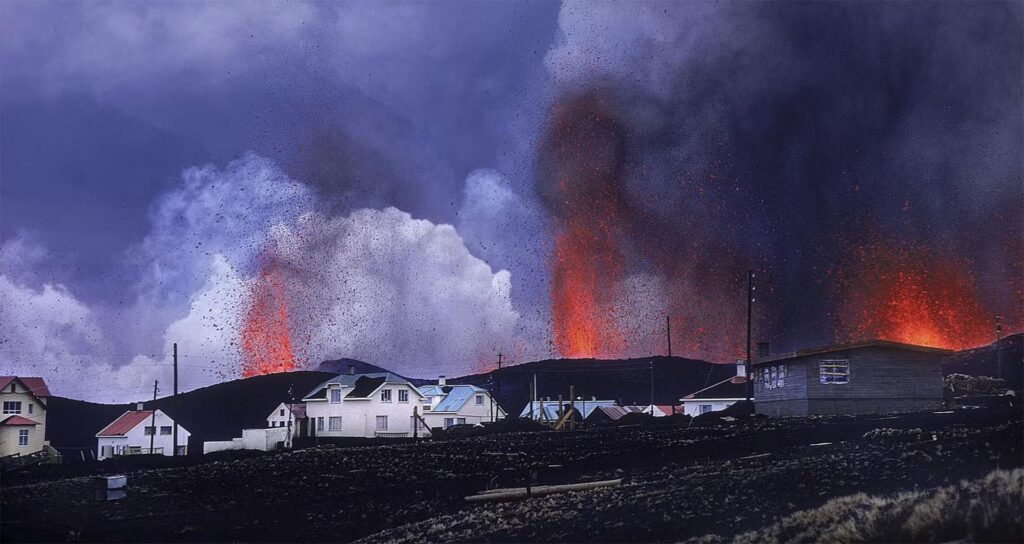
The news of the eruption triggered an immediate evacuation. Out of the island’s 5,500 residents, approximately 4,000 were evacuated by ship that very night. In the following days, many household things were relocated to safer grounds, as lava soon engulfed numerous buildings.
Tragically, the eruption claimed one life due to carbon dioxide poisoning, as deadly gases were released from the earth along with the molten rock. The fact that only one life was lost was considered fortunate, especially since the initial fissure had opened perilously close to the town’s easternmost residence.
The devastation saw about half of the town’s buildings either submerged under lava or destroyed. Yet, the community rebounded quickly from the disaster.
The End of The Eruption
This eruption, which concluded on July 3, 1973, was notable for being the first in Iceland to occur near a populated area. During a midnight walk, meteorologist Hjálmar Guðnason and his friend, Ólaf Granz, first observed the event. From the vantage point of Helgafellstoppur, they witnessed the ground splitting open and flames soaring into the sky. Despite initial scepticism from the police, the severity of the situation was quickly realized when they arrived at the scene to find a 1,600-meter-long fissure erupting violently. The community was swiftly alerted, and a mass evacuation to the wharf occurred just minutes before two in the morning.
The eruption’s aftermath saw Eldfellshraun Lava Field expand Heimaey by 20%, covering approximately 2.5 square kilometres. This event reshaped not only the geography of Heimaey but also the lives of its inhabitants.
Tyrkjaránið – The Turkish Abductions
In 1627, pirates from North Africa targeted Iceland, raiding Grindavik, The Westman Islands, and the East Fjords. They abducted nearly 400 Icelanders to the Barbary Coast—now modern-day Morocco, Algeria, Tunisia, and Libya—selling them into slavery. This dark episode in Icelandic history is known as the “Turkish Abductions” or Tyrkjaránið.
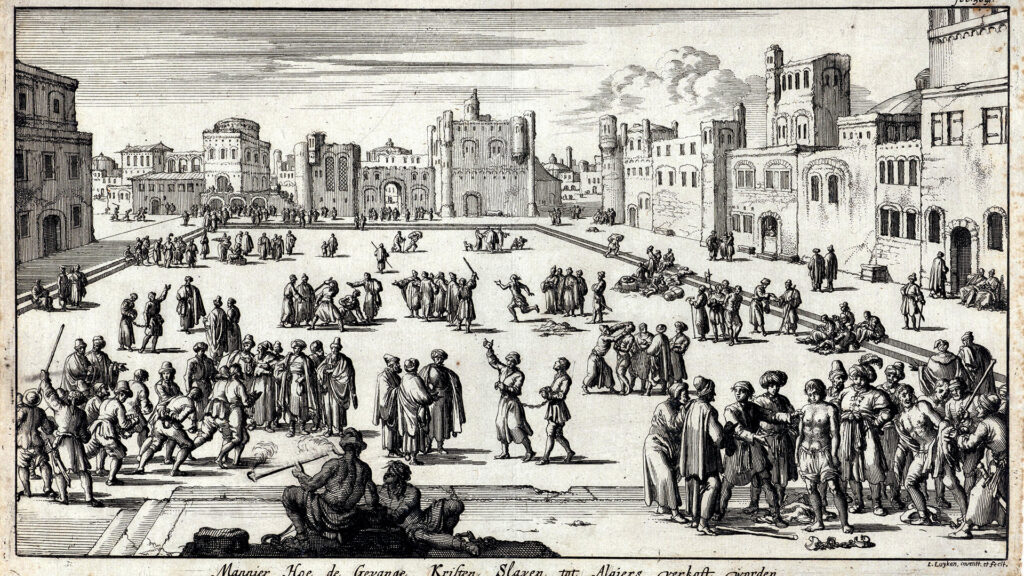
Two pirate groups, one from Algeria and the other from Sale (present-day Morocco), launched the attacks, killing around 50 people. Decades later, a ransom facilitated the return of 50 captives to Iceland.
The Westman Islands fell victim on July 16, 1627. Despite the islanders’ preparations for defence, the pirates landed unexpectedly at Ræningjatangi, outmanoeuvring the locals. They captured residents and livestock, sparing no one in their path. Those slow to comply were mercilessly killed, while others sought refuge in caves and natural hideouts. A Danish merchant ship in the harbour provided a brief sanctuary for some.
Over three days, the pirates held captives in Danish storehouses on The Westman Islands, executing any who resisted or were deemed unsellable. Despite the grim situation, around 200 islanders managed to escape.
Before departing, the pirates looted and burned the Landakirkja church. However, local folklore tells of the church bells being hidden and preserved. Among the tragic losses were 34 individuals, including Reverend Jón Þorsteinsson. Reverend Ólafur Egilsson, captured along with his heavily pregnant wife and two children, later recounted these harrowing events in his writings. Read more about the Turkish Abductions in our blog post.
How the Vestmannaeyjar got their name
During the late 9th century, Iceland became an attractive destination for Norse people who wanted to make a change. It’s possible that they were dissatisfied with the taxes imposed by the Norwegian king or tired of the constant conflicts in the British Isles. Others may have been lured by Iceland’s abundant fish, fowl, and walruses.
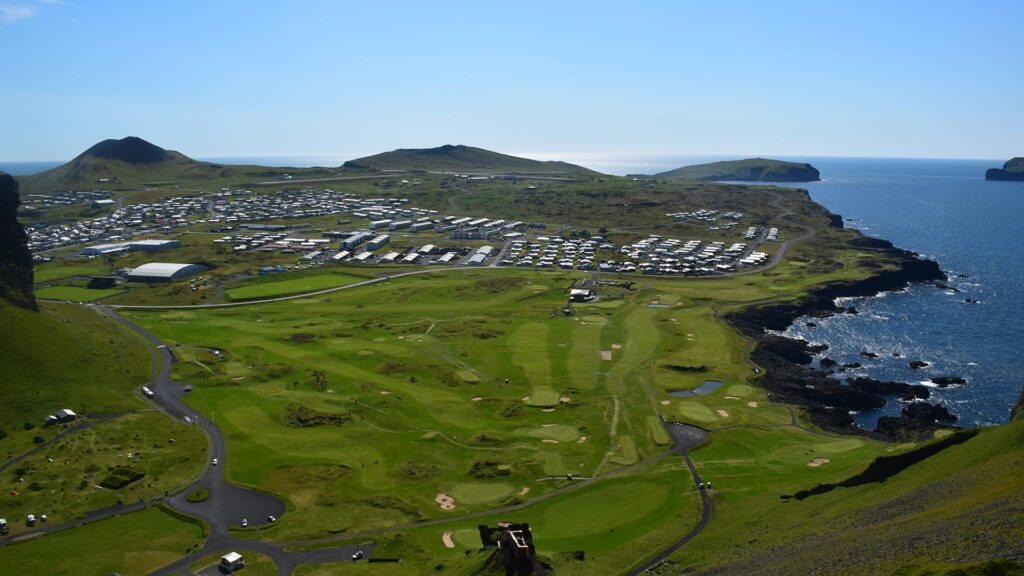
The Book of Settlements, written three centuries after Iceland’s settlement, chronicles how the Norse people made Iceland their new home. However, some people were forgotten, others were left out, and many stories were likely exaggerated.
Ingólfur Arnarson is often credited with settling in Iceland, but he was not the first. The Book of Settlements clearly states that other people had already moved to the island. Nevertheless, he is recognized as one of the earliest settlers and possibly the first to stay.
Ingólfur Arnarson did not make the journey from Norway to Iceland alone. He brought with him domestic animals, slaves, his sister Helga Arnardóttir, and his blood-brother and cousin Hjörleifur Hróðmarsson, who was also Helga’s husband.
This is how the story went in The Book of Settlements
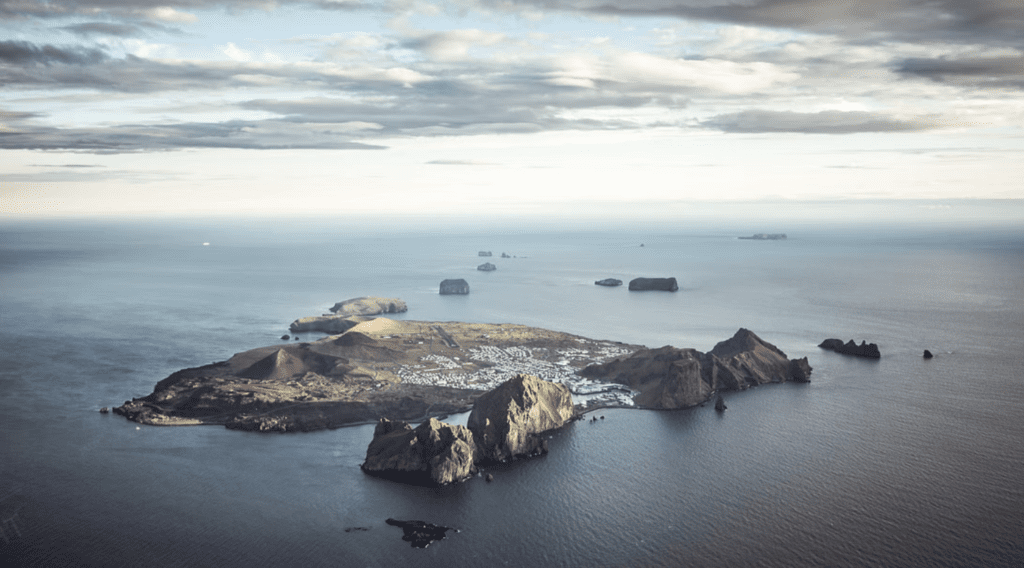
Ingólfur used his funds for a journey to Iceland, while Leifur embarked on a Viking raid towards the west. During his raid in Ireland, Leifur discovered a large, dark, underground cavern. Inside, he encountered a man holding a brightly shining sword.
Leifur killed the man, took the sword, and claimed a large amount of treasure. This act earned him the nickname Hjörleifur, which means “Leifur of the sword.” As Hjörleifur, he continued to raid across Ireland, gathering more treasure and capturing ten slaves named Dufþakur, Geirröður, Skjaldbjörn, Halldór, and Drafdrittur, among others not mentioned.
Following his adventures, Hjörleifur travelled to Norway to reunite with Ingólfur, who was not only his foster brother but also his wife’s brother, Helga Arnardóttir. That winter, Ingólfur performed a significant religious sacrifice and sought guidance from the oracles about his future, something Hjörleifur did not respect as he did not value sacrifices.
The oracles foretold that Ingólfur’s destined home was in Iceland. With this prophecy, both men, now relatives by marriage, readied their ships for the journey to Iceland. Hjörleifur loaded his ship with the treasures he had acquired from his raids, while Ingólfur filled his with their shared wealth. Once they had prepared everything needed for the expedition, they embarked on their sea voyage to Iceland.
The Journey To Iceland
During the summer, Ingólfur and his group began their journey to Iceland; King Harald Fairhair had ruled Norway for twelve years. By this time, it was 6073 winters since the creation of the world and 874 years since the birth of Christ. The travellers stayed together during their voyage until they caught their first glimpse of Iceland. At that moment, they went their separate ways. Upon seeing Iceland, Ingólfur performed a ritual by throwing his high seat pillars into the sea, trusting in omens to guide him. He pledged to establish his home where these pillars would be found ashore, leaving it to fate to determine his settlement’s location in Iceland.
Ingólfur arrived and settled at a location now known as Ingólfshöfði. Meanwhile, Hjörleifur and his crew were pushed westward along the coast, facing a severe water shortage. To address their thirst, the Irish slaves with Hjörleifur came up with a solution: they mixed meal and butter to create a food that wouldn’t make them thirsty, which they called “unthirsty fare” (óþorslátt). They also called it “minnþak,” deriving from the Gaelic word for flour. However, heavy rain provided them with much-needed water as they finished preparing it. They collected the rainwater in their awnings. When the minnþak started to mould, they disposed of it overboard, and it washed ashore at a place now called Minnþakseyr.
Trouble on Hjörleifshöfði
That winter, Hjörleifur constructed two large longhouses, one 18 fathoms (108 feet) and the other 19 fathoms (114 feet) long, where he lived through the winter. In the spring, Hjörleifur decided to start farming. He only had one ox, so he made his slaves pull the plough,
While Hjörleifur was busy working at the longhouse, Dufþakur suggested to his group that they should kill the ox and claim it was killed by a wild bear. They planned to convince Hjörleifur and his companions to search for this imaginary bear. Once Hjörleifur and his group were scattered in the forest looking for the bear, Dufþakur and his allies planned to ambush and kill them one by one. They executed this plan, telling Hjörleifur about the bear and then attacking Hjörleifur and his companions in the forest, ultimately killing them all.
The slaves fled with their women, possessions, and a boat. They sailed to some islands they spotted in the southwest and settled there temporarily. Ingólfur sent two slaves, Vífill and Karli, along the western coast to search for his High Seat pillars. When they reached Hjörleifshöfði, they discovered Hjörleifur was dead. They returned and informed Ingólfur of what had happened, and he was deeply affected by Hjörleifur’s death.
Ingólfur travelled west to Hjörleifshöfði, where he found Hjörleifur dead. Shocked, he lamented that Hjörleifur’s death at the hands of slaves was a tragic and undeserved fate for a brave and honourable man, suggesting that such misfortune comes to those who neglect sacrifices. Ingólfur then arranged for the burial of Hjörleifur and his men, taking over their ship and belongings.
Travel to Vestmannaeyjar
Looking from the headland, he noticed some islands to the southwest. He speculated that the slaves might have fled there, especially since their boat was missing. Ingólfur and his group set out to these islands, finding the slaves at a place now called Eið, caught by surprise while they were eating. The slaves scattered in panic, but Ingólfur pursued and killed them all. The location where Dufþakur was killed is now referred to as Dufþaksskor.
Many of the slaves chose to jump off cliffs that later bore their names. These islands, where the events took place, have been called the Westman Islands, named so because the slaves who were killed there were Westmen, indicating they were from the British Isles. Ingólfur and his crew brought back the widows of the murdered men to Hjörleifshöfði, where he spent another winter.
The following summer, he explored further west along the coast and spent a third winter near Ingólfsfell, west of the Ölfus River. Some believe he was buried there. Ingólfur’s High Seat Pillars were eventually found by Vífill and Karli at Arnarhvoll in downtown Reykjavik.


